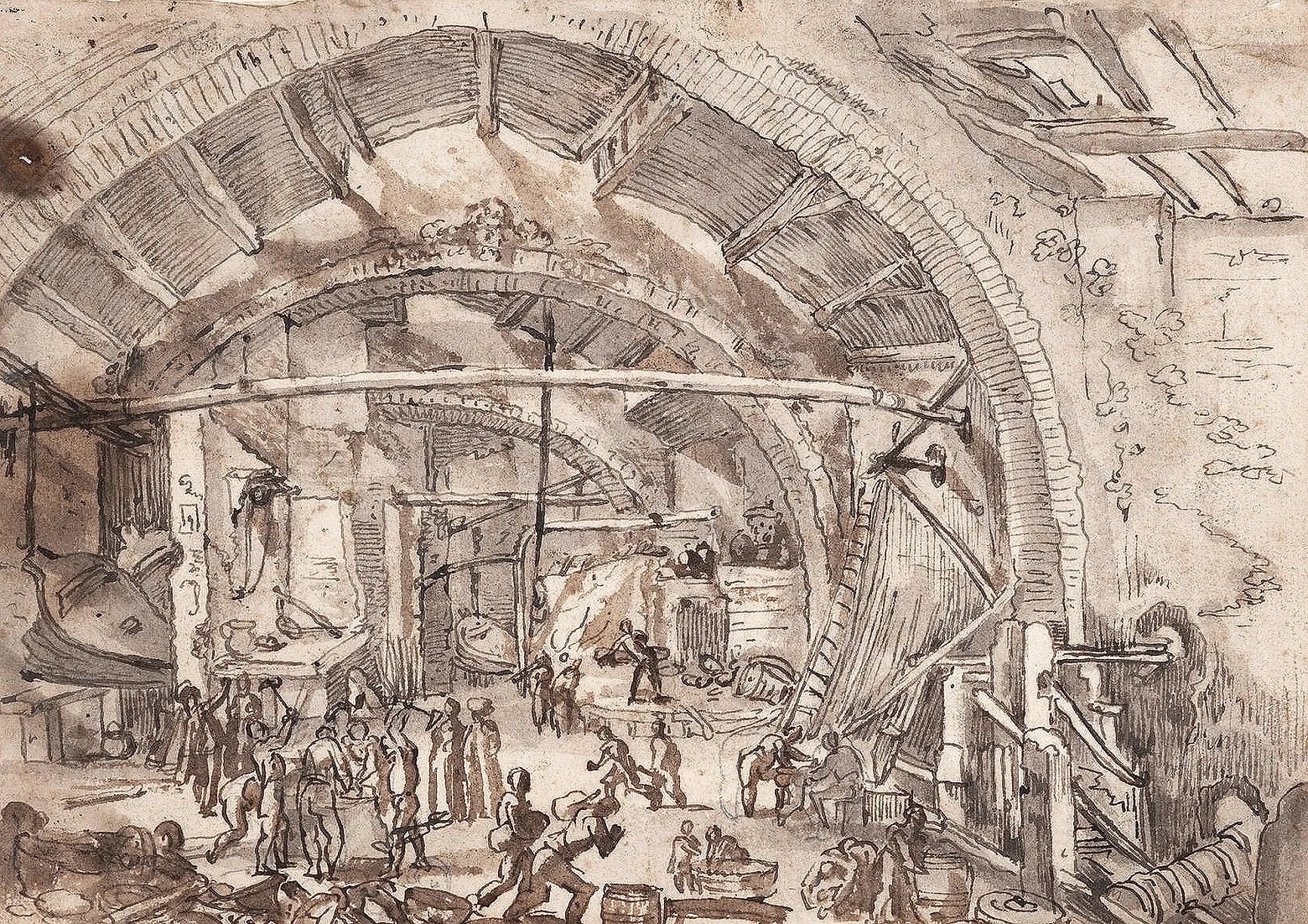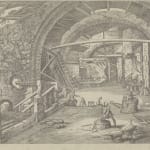
Willem II van Nieulandt (Antwerp 1584 - 1635 Amsterdam) after Sebastiaen Vrancx (Antwerp 1573 - 1647)
Een Smederij (A Forge)
Rijksmuseum, Amsterdam, inv. no. RP-P-OB-4175.
Sebastiaen Vrancx (Antwerp 1573 - 1647)
The present work is the original study for a print, made by Willem van Nieulandt II (1582-1635), titled Een Smederij ('The Forge'). Although the print's original design was credited to Willem's teacher Paul Bril (1554-1626) when the print was published, as were the other etchings in the series, this was false in several instances. The reason behind the credit to Bril for those works which were not based on his drawings may in fact have been a subtle marketing ploy by the younger artist to attract attention off the back of his mentor's fame and reputation; or, alternatively, it may have indicated that van Nieulandt wished to express that the subjects and compositions were derived from Bril's teaching. Recent research has revealed that a number of Van Nieulandt's prints from this series were in fact based on drawings by Sebastian Vrancx, a fellow student of Bril's in Rome, with this sheet a newly- discovered and hitherto unpublished example from that group.
Provenance
Private collection, France.- X
- Tumblr




